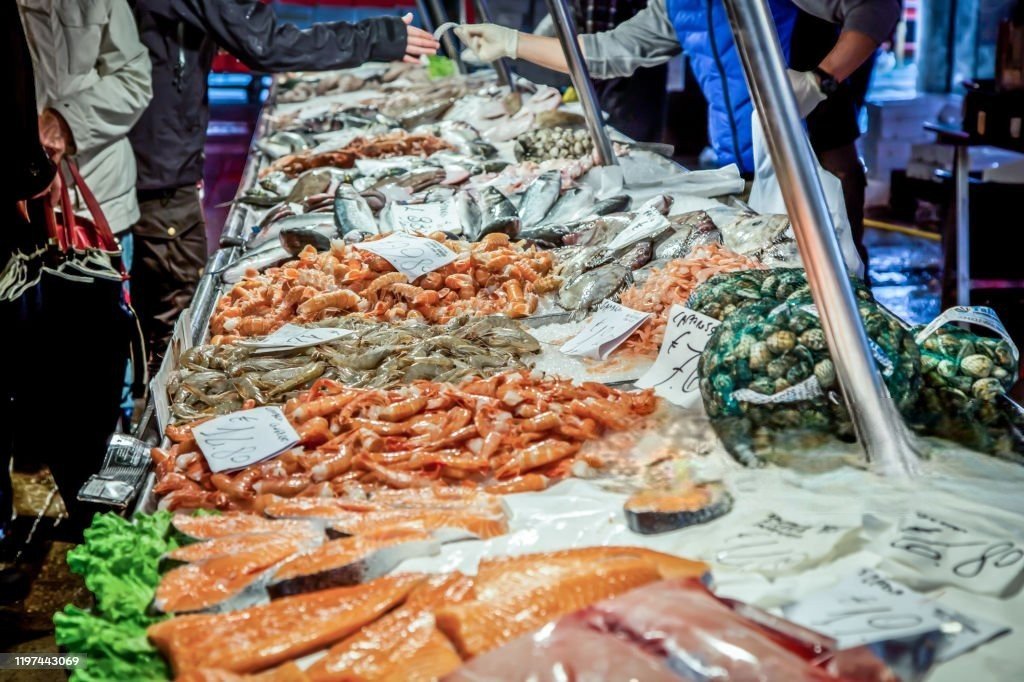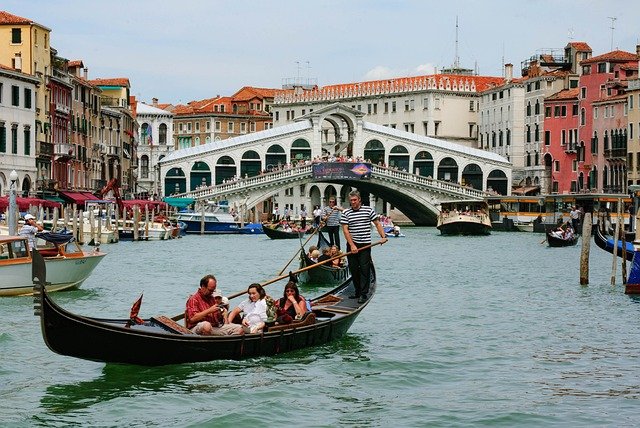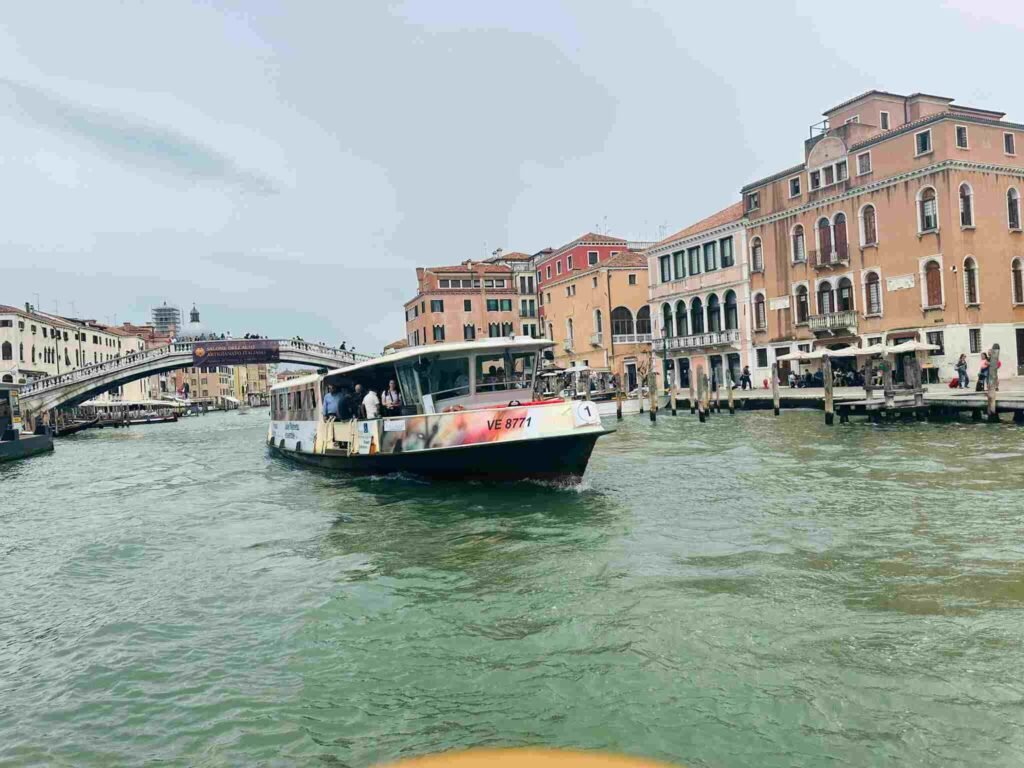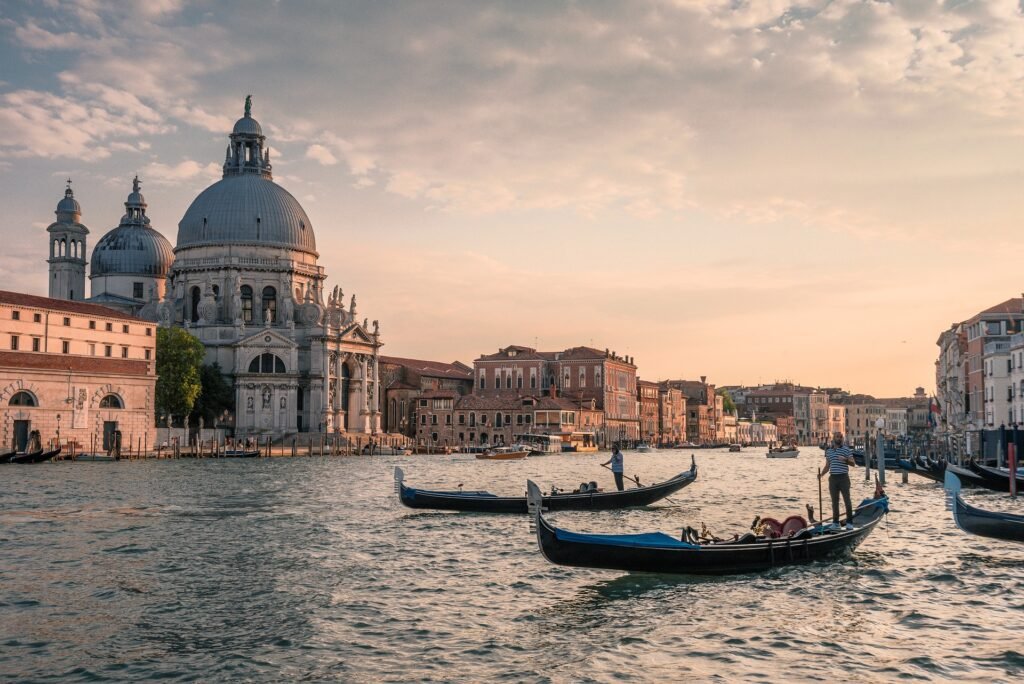The Rialto Market is one of the most vibrant and historically significant places in Venice, offering visitors a true taste of local life and a glimpse into Venice’s rich trading past. For food lovers, culture seekers, and those who want to experience the daily rhythm of the city, a visit to the Rialto Market is a must.
Here’s i will explain you everything you need to know.
Rialto Market: Venice’s Local Heartbeat
Rialto Market isn’t just another tourist attraction. It’s a place where Venetians actually shop, laugh, chat, and buy fresh produce every morning. If you want to feel the real Venice, not just the postcard version, this is where you go.
Fresh Fish & Local Produce
The Pescheria (Fish Market) is the most popular part. You’ll see fresh fish, clams, squid, shrimp — all caught the same morning. Right next to it is the Erberia (Vegetable Market) where locals buy seasonal fruits, artichokes, tomatoes, and herbs.
📍 Tip: Go early in the morning (7:30–9:00 AM) to see the market at its liveliest.

When is the Market Open
Fish Market (Pescheria):
🕘 Tuesday to Saturday, 7:30 AM to noon
- Vegetable Market (Erberia):
🕘 Monday to Saturday, 7:30 AM to 1:30 PM
Sunday is usually closed.
How to Get There?
You can walk across the famous Rialto Bridge, or take a vaporetto (water bus) to the Rialto stop. The market is located just behind the bridge, and you’ll hear the vendors before you see them!
Photography Tip
This market is a dream for photographers. The morning light, colorful vegetables, and expressions of local sellers create real-life stories. Be respectful if you want to take portraits — a smile goes a long way!
Local Experience: What to Expect
- It’s crowded in the mornings
- You’ll hear Venetian dialects
- Don’t expect tourist prices — this is for locals
- Bring cash (some vendors don’t accept cards)
Can You Eat at the Market?
Not inside, but the nearby bacari (Venetian wine bars) serve delicious snacks made from fresh market ingredients. Try cicchetti with cod fish (baccalà) or grilled squid.
A: Absolutely. It’s more about the experience — the sights, smells, and sounds of real Venice.
A: Yes! Many local guides offer food and walking tours that include tastings and history.
A: Arrive early (before 8:30 AM) or after 12 PM when the market starts winding down.



